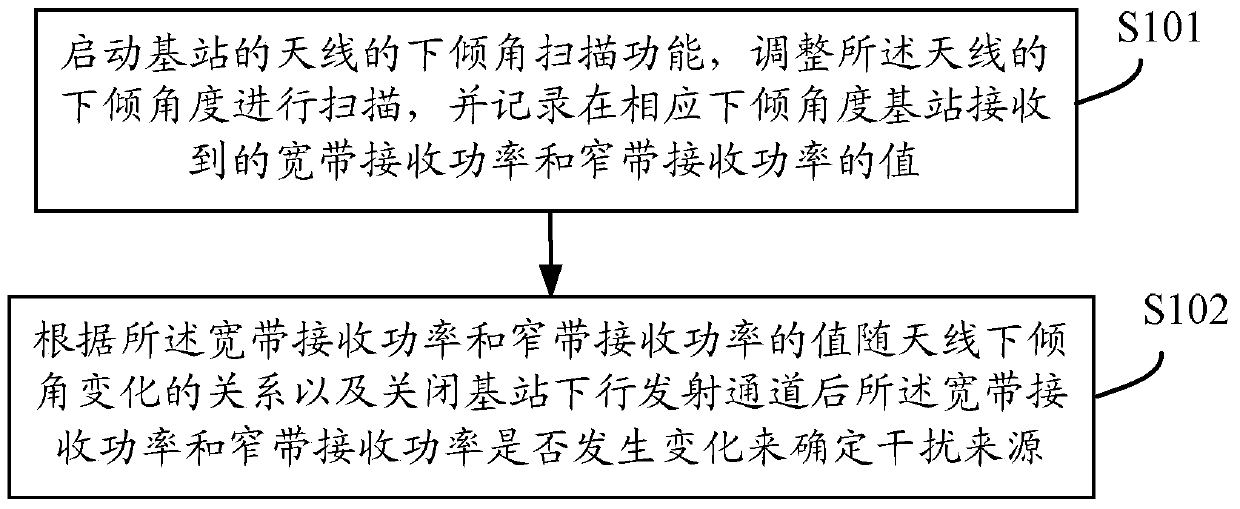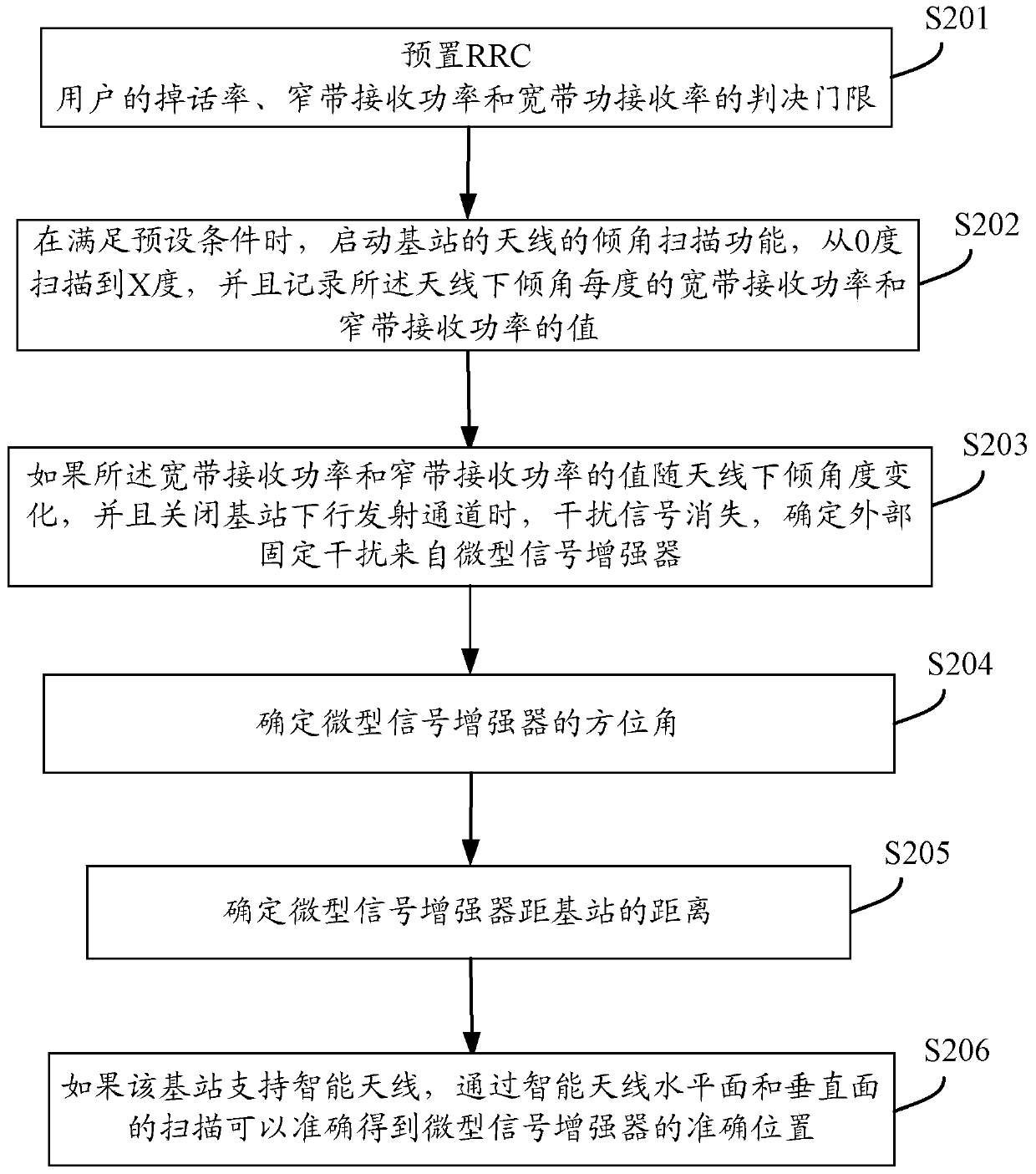A method and system for locating base station interference
A technology for locating base stations and base stations, which is applied in the field of communication, and can solve problems such as failure to work normally, interference on the live network, and inability to determine the type of interference
- Summary
- Abstract
- Description
- Claims
- Application Information
AI Technical Summary
Problems solved by technology
Method used
Image
Examples
Embodiment
[0071] Such as figure 2 As shown, this embodiment provides a method for locating base station interference, including:
[0072] S101: Start the downtilt angle scanning function of the antenna of the base station, adjust the downtilt angle of the antenna to scan, and record the values of the wideband received power and the narrowband received power received by the base station at the corresponding downtilt angle;
[0073] Adjust the downtilt angle of the antenna to scan, such as scanning from 0 degrees to X degrees, where X degrees is the maximum adjustment angle of the antenna. In this embodiment, the broadband received power refers to the entire intermediate frequency band (filter intermediate frequency band) The receiving power within the narrowband receiving power refers to the receiving power within the bandwidth configured by the network management background.
[0074] In step S101, before starting the downtilt scanning function of the antenna of the base station, it ...
PUM
 Login to View More
Login to View More Abstract
Description
Claims
Application Information
 Login to View More
Login to View More - R&D
- Intellectual Property
- Life Sciences
- Materials
- Tech Scout
- Unparalleled Data Quality
- Higher Quality Content
- 60% Fewer Hallucinations
Browse by: Latest US Patents, China's latest patents, Technical Efficacy Thesaurus, Application Domain, Technology Topic, Popular Technical Reports.
© 2025 PatSnap. All rights reserved.Legal|Privacy policy|Modern Slavery Act Transparency Statement|Sitemap|About US| Contact US: help@patsnap.com



